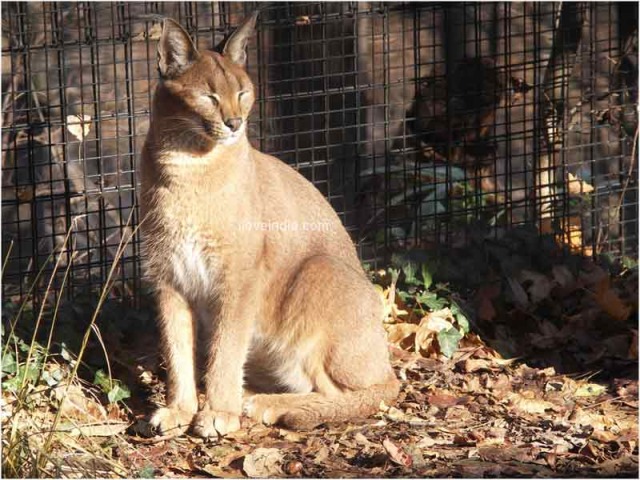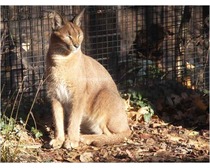Want to get amazed by the diverse and incredible facts about caracals. Read on and explore some interesting and amazing information on caracal, as given in this article.
Facts About Caracal
Caracal (Caracal caracal) is a territorial wild cat, distributed in parts of Africa and Middle East. Originally thought to be a close relative of the Persian, Egyptian and African Lynx, research have indicated that it is not an actual lynx and in fact, is related to the Serval and the African golden cat. The main trademark features of the animal are its black tufted ears and black markings on the whisker pads, above the eyes, around the tip of the nose. The tail of a caracal is comparatively shorter than the rest of its heir well-muscled body and its eye color varies from green or grey to copper and even golden. Due to the disproportion in size of their legs, caracals are very efficient predators and can even snatch low-flying birds from the air. To know some more interesting facts and amazing information on this exquisite species, read the pointers given below.

Facts About Caracal
Binomial Name: Caracal caracal
Kingdom: Animalia
Phylum: Chordata
Subphylum: Vertebrata
Class: Mammalia
Order: Carnivora
Family: Felidae
Subfamily: Felinae
Genus: Caracal
Species: C.caracal
Length: 65 to 90 cm (2 to 3 ft)
Tail Length: 30 cm (1 ft)
Weight: 13 to 18 kg (males), 11 kg or 24 lb (females)
Life Span: 12 to 18 years
Diet: Primarily carnivorous (small mammals, birds, young ungulates, lizards, vegetable matters and even insects)
Range: Africa, Southern Asia, India and Arabia
Habitat: Dry savannah plains, scrub, woodland areas, mountainous terrain regions of desserts.
Age of Sexual Maturity: 7 to 10 months
Gestation Period: 68 to 81 days
Number of Offspring: One to six
Interesting & Amazing Information On Caracals
- The word ‘caracal’ has been taken from the Turkish expression ‘karakulak’, which means ‘black ear’. This arises from the fact that tip of the ears of these animals is black and is covered with long tufts of black hair (approx 1.7 inches long).
- Although called the ‘desert lynx’, caracals are not related to this species of animal. Unlike lynx, they do not have ruff around their face. Rather, they have short reddish-brown fur with white chin, throat and belly.
- The black tuft of hair on a caracal’s ear and the black markings makes its face very expressive, particularly when its ears are turned down or back, in defensive or hostile threat.
- The pupils in the eyes of a caracal contract to circles, rather than slits.
- For maternal purposes or at the time of giving birth, caracals make use of abandoned burrows, dens and rock crevices.
- The front legs of a caracal are noticeably shorter than its hind legs. Due to its long hind legs, it can jump to great heights and can even snatch flying birds from the air.
- Caracals are regarded as serious pests of goats and sheep, by farmers in Southern Africa.
- These animals mostly feed on hares, rabbits, rodents and small antelopes. They are even known to kill preys that are larger than themselves, like small mammals, adult springbok, etc.
- Caracal is mainly a nocturnal and solitary animal, with sharp hearing and vision power. The unique amalgamation of pace, dexterity and strength in a caracal makes the animal a formidable prey.
- The animal is territorial in nature and marks its boundary with its urine. The major forms of vocalizations used by this species include growls, meows, hisses and coughing calls.


See also
More from iloveindia.com
- Home Remedies | Ayurveda | Vastu | Yoga | Feng Shui | Tattoos | Fitness | Garden | Nutrition | Parenting | Bikes | Cars | Baby Care | Indian Weddings | Festivals | Party ideas | Horoscope 2015 | Pets | Finance | Figures of Speech | Hotels in India : Delhi | Hyderabad | Chennai | Mumbai | Kolkata | Bangalore | Ahmedabad | Jaipur
- Contact Us Careers Disclaimer Privacy Policy Advertise With Us Lifestyle Sitemap Copyright iloveindia.com. All Rights Reserved.




